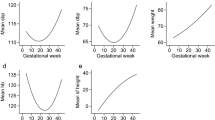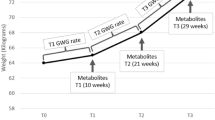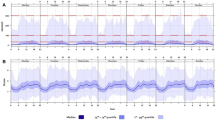Abstract
ABSTRACT. In this study the uterine movement of oxygen, glucose, and lactate was quantitated in the awake late pregnant guinea pig. Mean uterine uptake of oxygen per kg of uterus with conceptus was 581 μmol min-1, which is comparable to the value reported for the awake near-term rabbit, but 30% higher than the value reported for the awake near-term sheep. Experiment-related anemia in some animals was associated with a reduced uterine oxygen uptake. The arteriovenous oxygen difference across the uterus correlated positively with the arterial oxygen content and the hemoglobin concentration and negatively with uteroplacental blood flow. Uterine oxygen uptake showed a positive correlation with both the arterial hemoglobin and the uteroplacental blood flow. Uterine lactate output accounted for 20% of uterine glucose uptake, assuming maternally derived glucose to be the only source for uterine lactate output. After correction for this lactate output, the uterine glucose uptake was 96.5 μmol min-1. kg-1 of pregnant uterus. This value is 30% higher than in the awake near-term rabbit and more than twice as high as that in the awake near-term sheep. Nevertheless, because of the high uterine demand for substrates, this uterine glucose uptake could only cover 45% of the caloric requirements of the pregnant uterus. The late pregnant guinea pig fetus may derive as much as 55 % of its caloric uptake for fat deposition and protein accretion. Therefore, it is likely that the nonglucose uterine caloric uptake in the late pregnant guinea pig consists predominantly of fat precursors and amino acids.
Similar content being viewed by others
Log in or create a free account to read this content
Gain free access to this article, as well as selected content from this journal and more on nature.com
or
Author information
Authors and Affiliations
Rights and permissions
About this article
Cite this article
Peeters, L., Mårtensson, L., Van Kreel, B. et al. Movement of Oxygen, Glucose, and Lactate across the Uterus of the Awake Near-Term Guinea Pig. Pediatr Res 20, 730–734 (1986). https://doi.org/10.1203/00006450-198608000-00006
Received:
Accepted:
Issue date:
DOI: https://doi.org/10.1203/00006450-198608000-00006



